Nemanja Hranisavljevic
Accessing and Interpreting OPC UA Event Traces based on Semantic Process Descriptions
Jul 25, 2022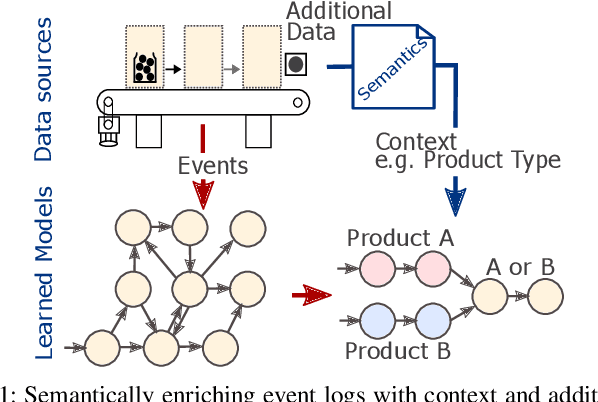
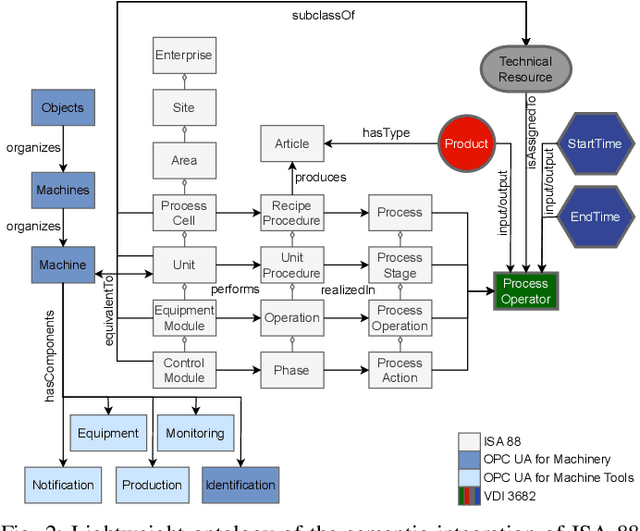
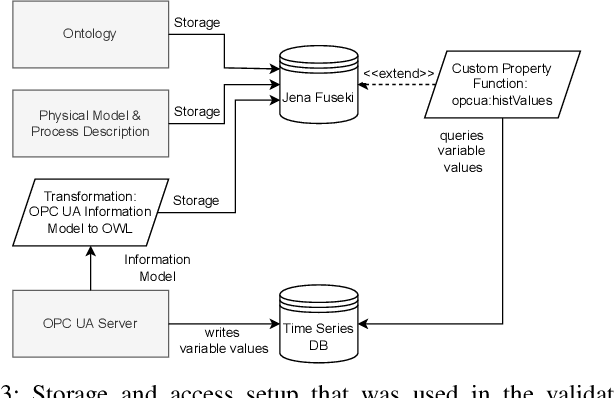
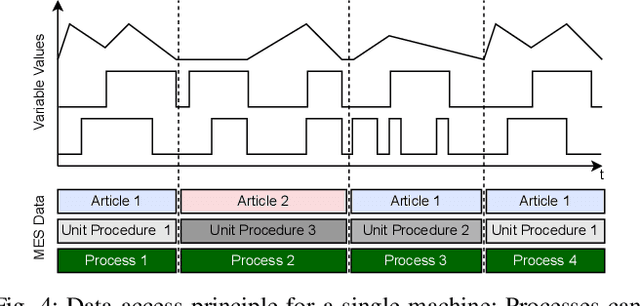
Abstract:The analysis of event data from production systems is the basis for many applications associated with Industry 4.0. However, heterogeneous and disjoint data is common in this domain. As a consequence, contextual information of an event might be incomplete or improperly interpreted which results in suboptimal analysis results. This paper proposes an approach to access a production systems' event data based on the event data's context (such as the product type, process type or process parameters). The approach extracts filtered event logs from a database system by combining: 1) a semantic model of a production system's hierarchical structure, 2) a formalized process description and 3) an OPC UA information model. As a proof of concept we demonstrate our approach using a sample server based on OPC UA for Machinery Companion Specifications.
A Novel Anomaly Detection Algorithm for Hybrid Production Systems based on Deep Learning and Timed Automata
Oct 29, 2020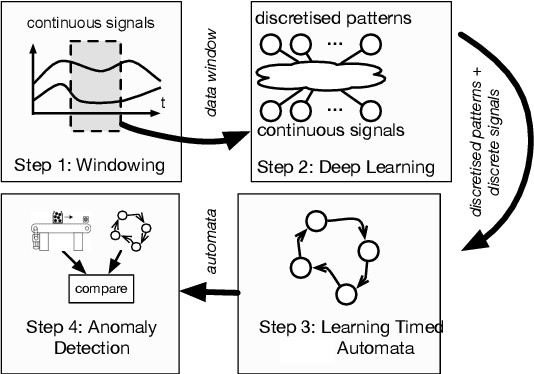

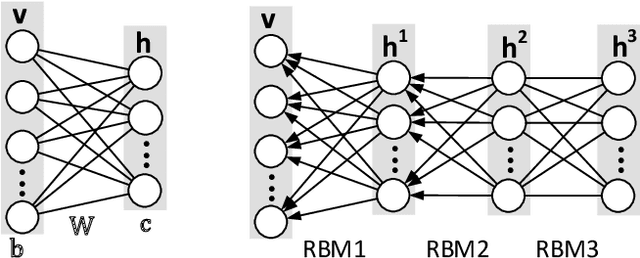

Abstract:Performing anomaly detection in hybrid systems is a challenging task since it requires analysis of timing behavior and mutual dependencies of both discrete and continuous signals. Typically, it requires modeling system behavior, which is often accomplished manually by human engineers. Using machine learning for creating a behavioral model from observations has advantages, such as lower development costs and fewer requirements for specific knowledge about the system. The paper presents DAD:DeepAnomalyDetection, a new approach for automatic model learning and anomaly detection in hybrid production systems. It combines deep learning and timed automata for creating behavioral model from observations. The ability of deep belief nets to extract binary features from real-valued inputs is used for transformation of continuous to discrete signals. These signals, together with the original discrete signals are than handled in an identical way. Anomaly detection is performed by the comparison of actual and predicted system behavior. The algorithm has been applied to few data sets including two from real systems and has shown promising results.
Dimensionality Reduction and Anomaly Detection for CPPS Data using Autoencoder
Oct 28, 2020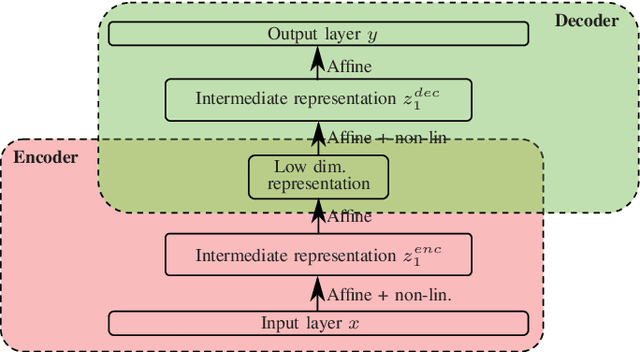
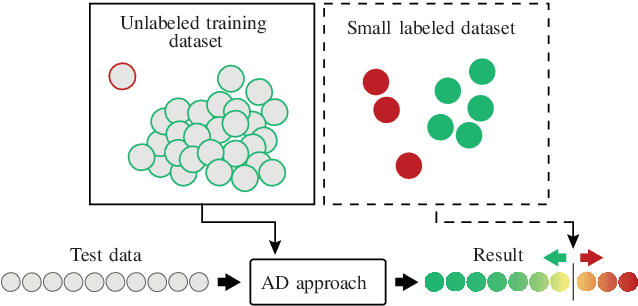
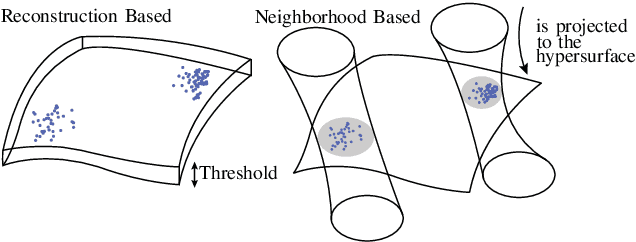

Abstract:Unsupervised anomaly detection (AD) is a major topic in the field of Cyber-Physical Production Systems (CPPSs). A closely related concern is dimensionality reduction (DR) which is: 1) often used as a preprocessing step in an AD solution, 2) a sort of AD, if a measure of observation conformity to the learned data manifold is provided. We argue that the two aspects can be complementary in a CPPS anomaly detection solution. In this work, we focus on the nonlinear autoencoder (AE) as a DR/AD approach. The contribution of this work is: 1) we examine the suitability of AE reconstruction error as an AD decision criterion in CPPS data. 2) we analyze its relation to a potential second-phase AD approach in the AE latent space 3) we evaluate the performance of the approach on three real-world datasets. Moreover, the approach outperforms state-of-the-art techniques, alongside a relatively simple and straightforward application.
* Copyright IEEE 2019
 Add to Chrome
Add to Chrome Add to Firefox
Add to Firefox Add to Edge
Add to Edge